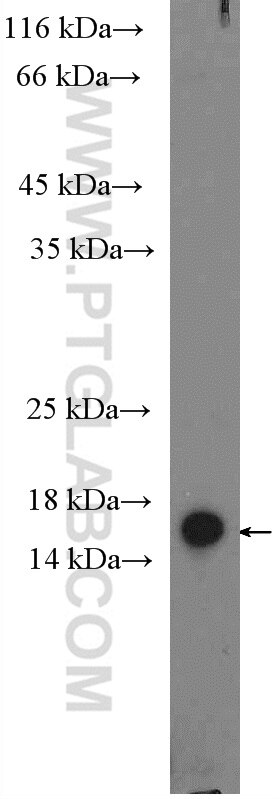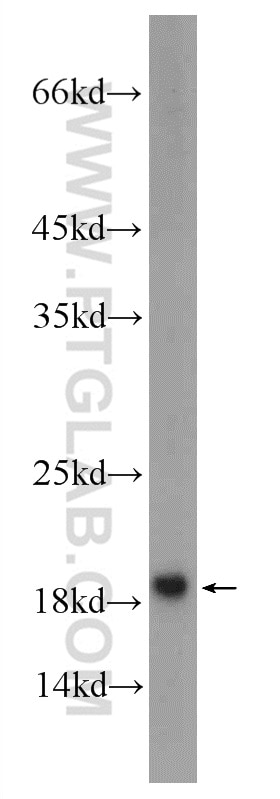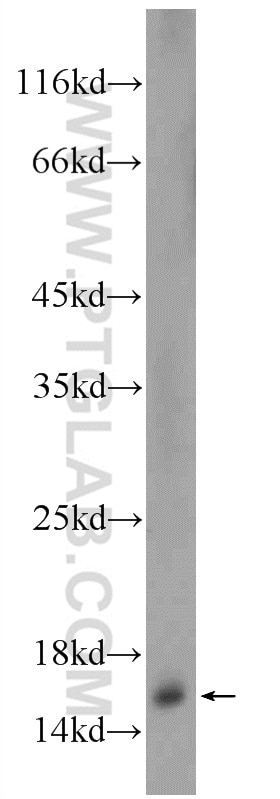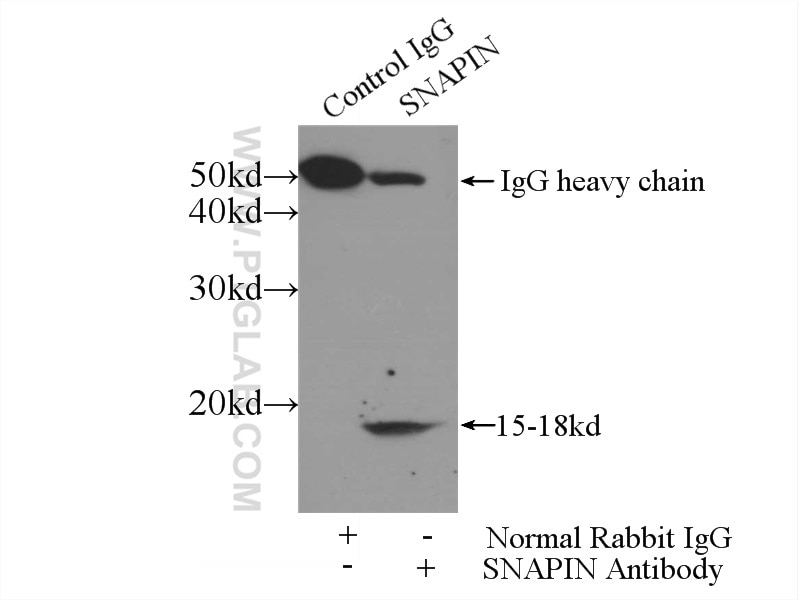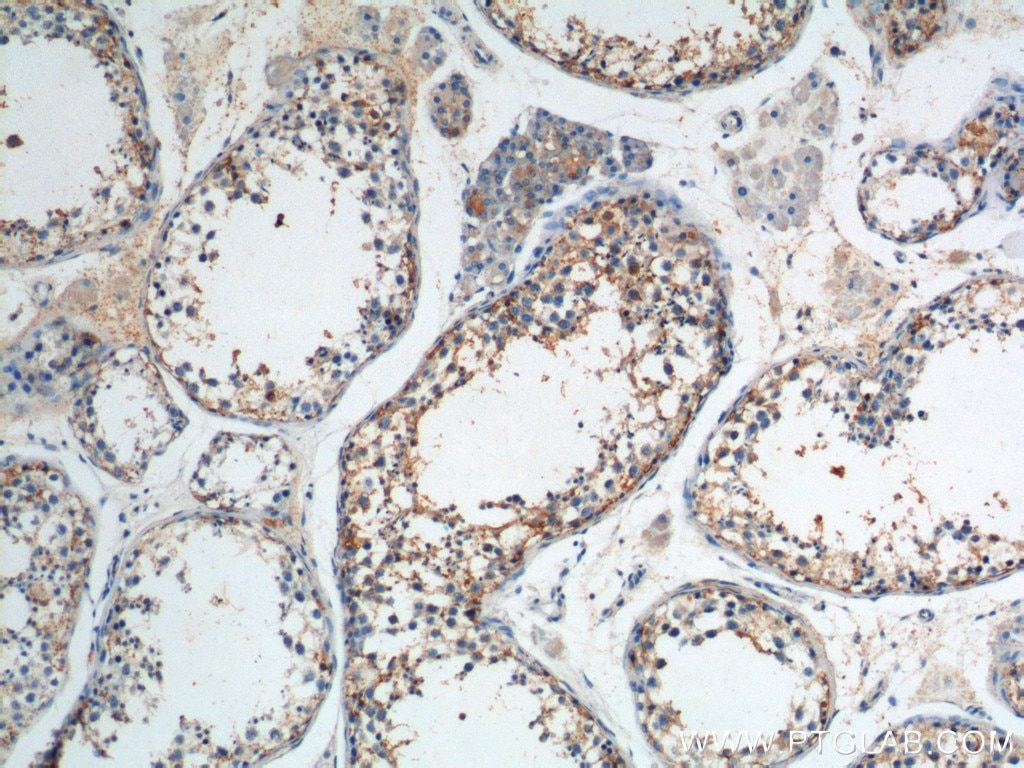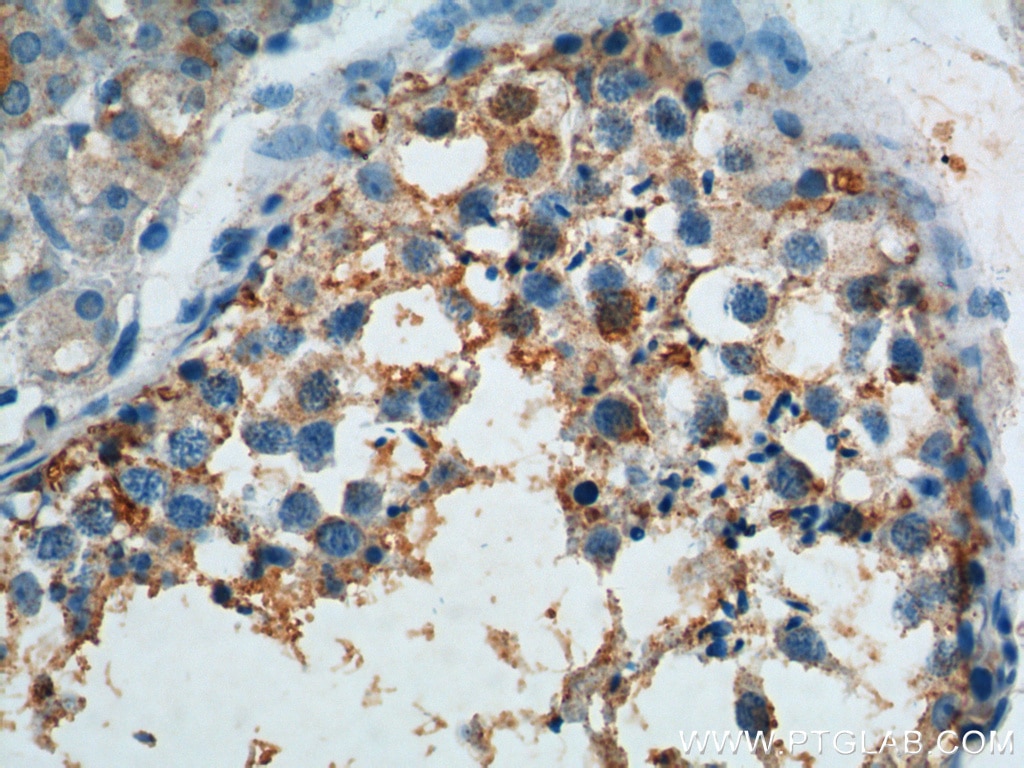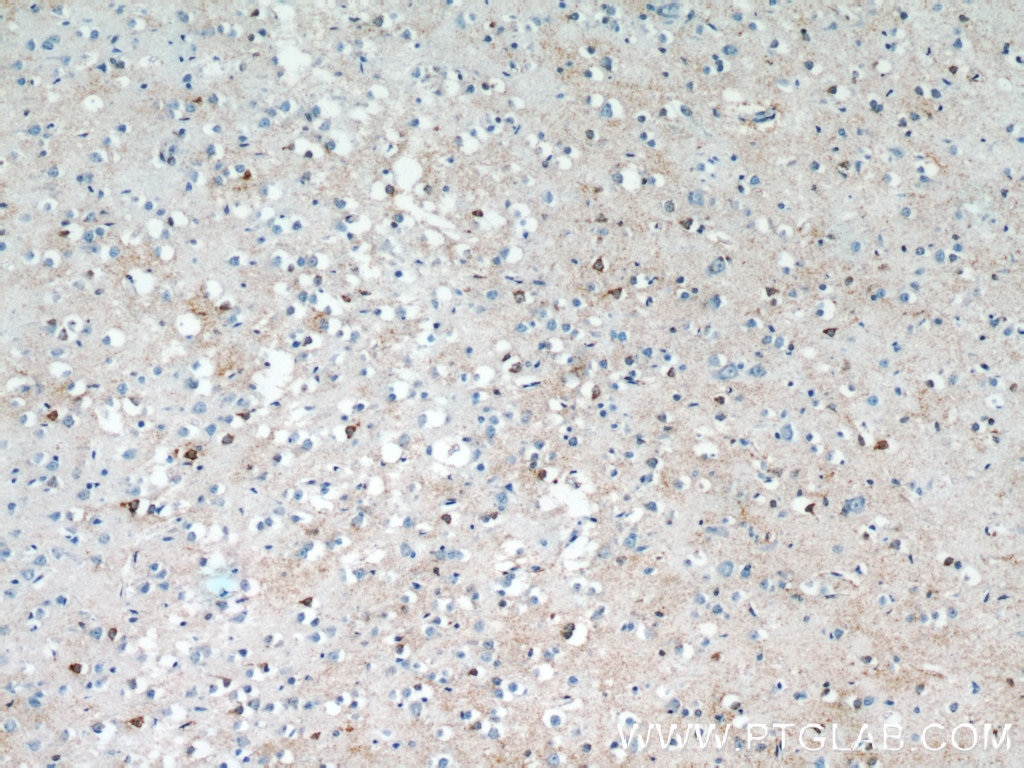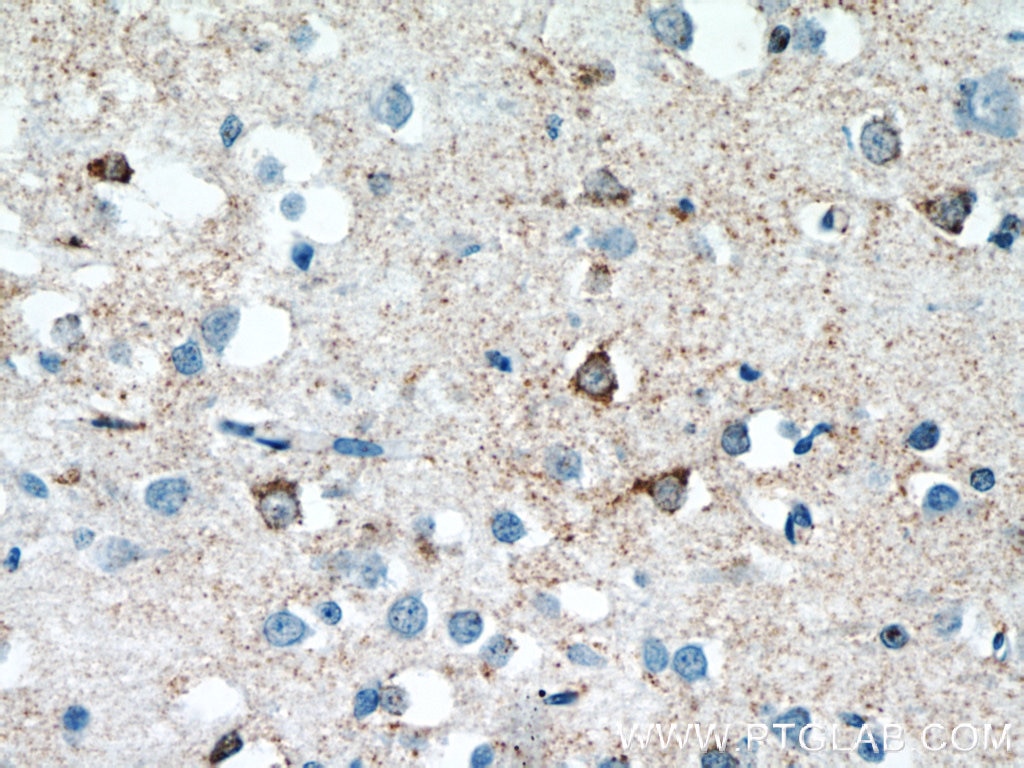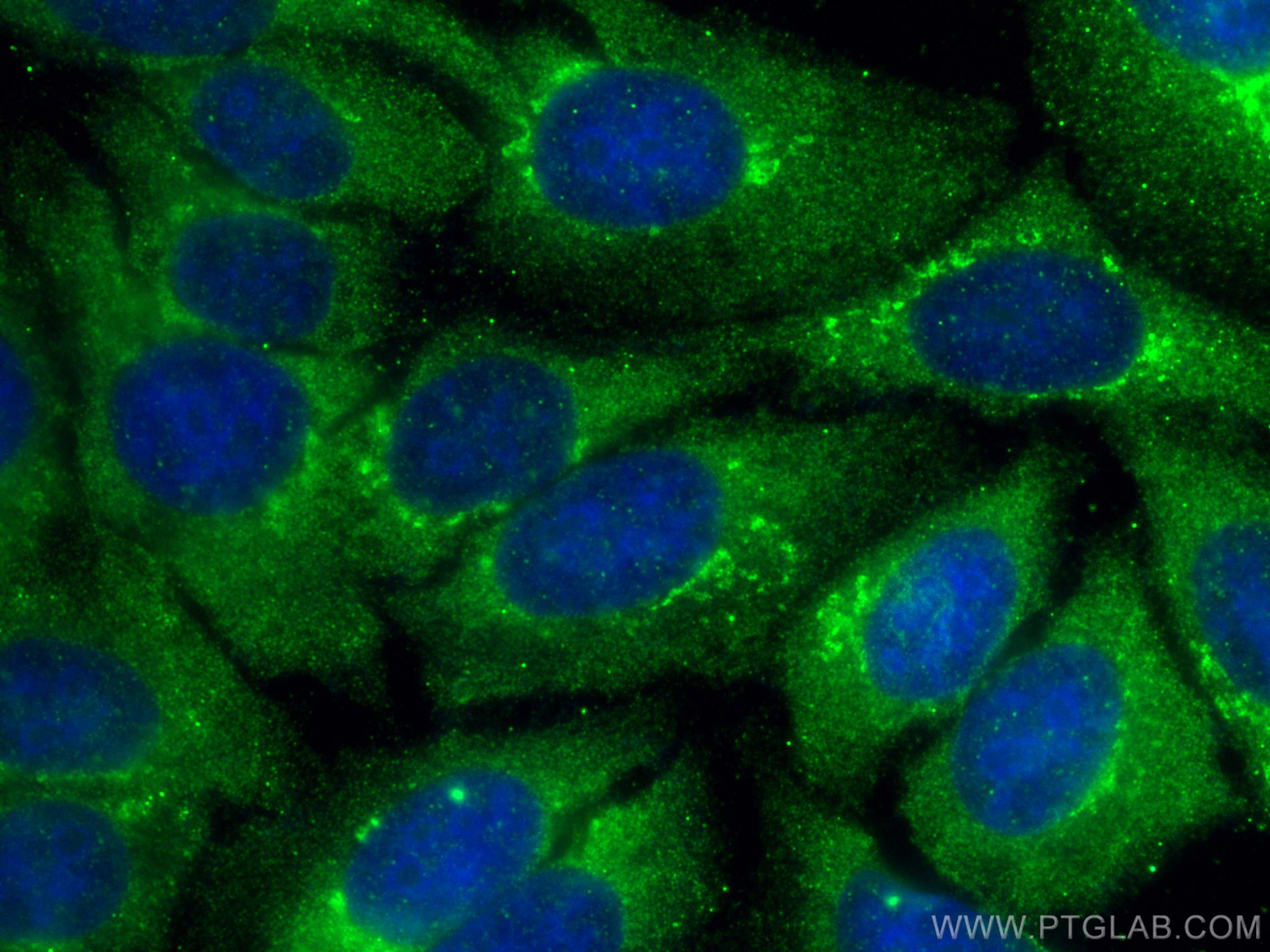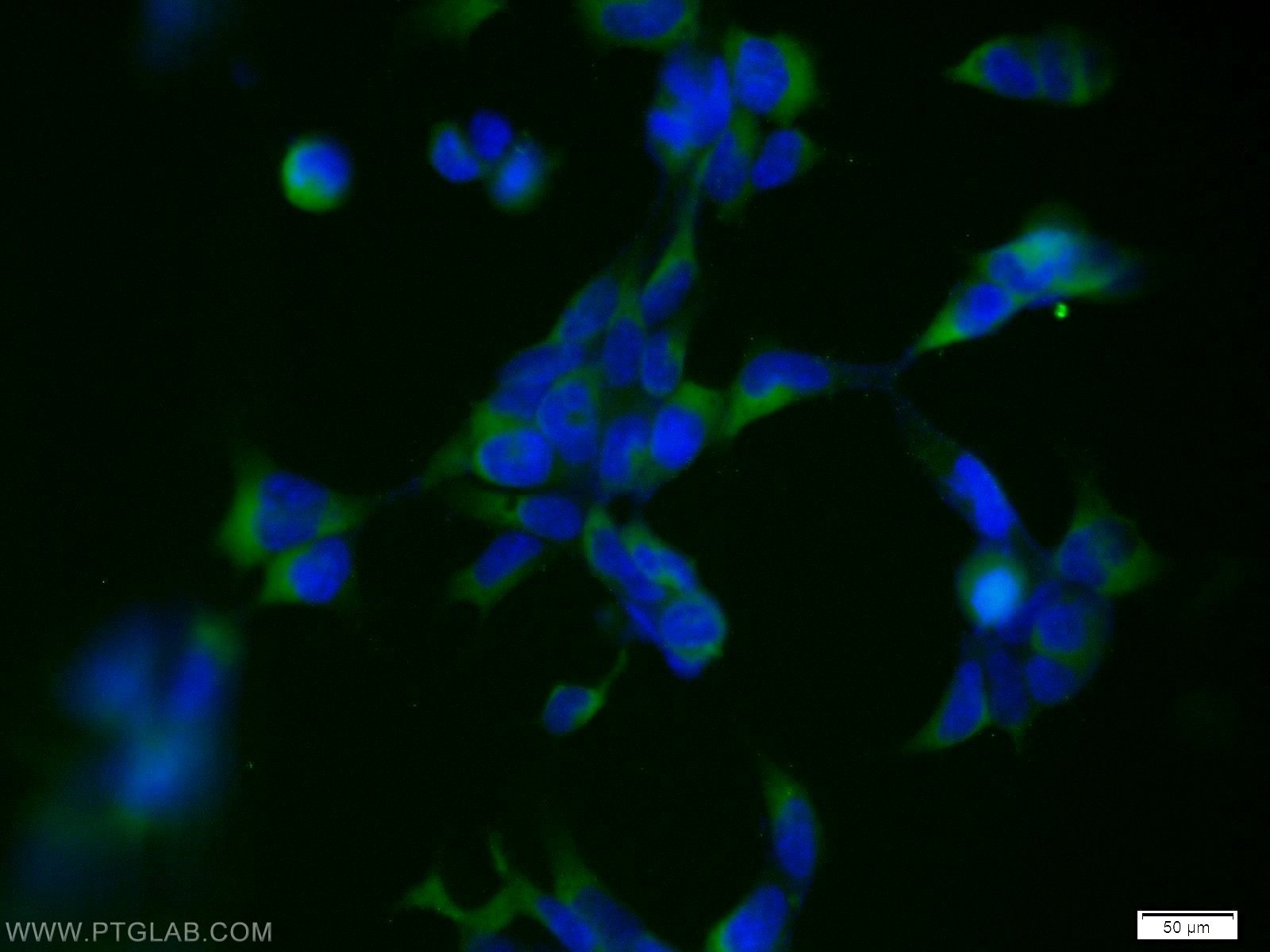SNAPIN Polyklonaler Antikörper
SNAPIN Polyklonal Antikörper für WB, IHC, IF/ICC, IP, ELISA
Wirt / Isotyp
Kaninchen / IgG
Getestete Reaktivität
human, Maus, Ratte
Anwendung
WB, IHC, IF/ICC, IP, ELISA
Konjugation
Unkonjugiert
Kat-Nr. : 10055-1-AP
Synonyme
Geprüfte Anwendungen
| Erfolgreiche Detektion in WB | A375-Zellen, HEK-293-Zellen, Rattenhirngewebe |
| Erfolgreiche IP | Maushirngewebe |
| Erfolgreiche Detektion in IHC | humanes Hodengewebe, humanes Hirngewebe Hinweis: Antigendemaskierung mit TE-Puffer pH 9,0 empfohlen. (*) Wahlweise kann die Antigendemaskierung auch mit Citratpuffer pH 6,0 erfolgen. |
| Erfolgreiche Detektion in IF/ICC | HepG2-Zellen |
Empfohlene Verdünnung
| Anwendung | Verdünnung |
|---|---|
| Western Blot (WB) | WB : 1:200-1:1000 |
| Immunpräzipitation (IP) | IP : 0.5-4.0 ug for 1.0-3.0 mg of total protein lysate |
| Immunhistochemie (IHC) | IHC : 1:50-1:500 |
| Immunfluoreszenz (IF)/ICC | IF/ICC : 1:50-1:500 |
| It is recommended that this reagent should be titrated in each testing system to obtain optimal results. | |
| Sample-dependent, check data in validation data gallery | |
Veröffentlichte Anwendungen
| WB | See 12 publications below |
| IHC | See 2 publications below |
| IF | See 2 publications below |
Produktinformation
10055-1-AP bindet in WB, IHC, IF/ICC, IP, ELISA SNAPIN und zeigt Reaktivität mit human, Maus, Ratten
| Getestete Reaktivität | human, Maus, Ratte |
| In Publikationen genannte Reaktivität | human, Maus, Ratte |
| Wirt / Isotyp | Kaninchen / IgG |
| Klonalität | Polyklonal |
| Typ | Antikörper |
| Immunogen | SNAPIN fusion protein Ag0101 |
| Vollständiger Name | SNAP-associated protein |
| Berechnetes Molekulargewicht | 15 kDa |
| Beobachtetes Molekulargewicht | 15-18 kDa |
| GenBank-Zugangsnummer | BC000761 |
| Gene symbol | SNAPIN |
| Gene ID (NCBI) | 23557 |
| Konjugation | Unkonjugiert |
| Form | Liquid |
| Reinigungsmethode | Antigen-Affinitätsreinigung |
| Lagerungspuffer | PBS with 0.02% sodium azide and 50% glycerol |
| Lagerungsbedingungen | Bei -20°C lagern. Nach dem Versand ein Jahr lang stabil Aliquotieren ist bei -20oC Lagerung nicht notwendig. 20ul Größen enthalten 0,1% BSA. |
Hintergrundinformationen
Snapin, a protein of relative molecular weight of 15kd, is implicated in neurotransmission by binding to SNAP-25. Snapin was enriched in neurons and exclusively located on synaptic vesicle membrane, which may be a PKA target for modulating transmitter release through the cAMP-dependent signal-transduction pathway. This anitbody can recognize the 15-18kd(Monomer) and 30-36kd(Dimer) forms of SNAPIN.
Protokolle
| PRODUKTSPEZIFISCHE PROTOKOLLE | |
|---|---|
| WB protocol for SNAPIN antibody 10055-1-AP | Protokoll herunterladen |
| IHC protocol for SNAPIN antibody 10055-1-AP | Protokoll herunterladenl |
| IF protocol for SNAPIN antibody 10055-1-AP | Protokoll herunterladen |
| IP protocol for SNAPIN antibody 10055-1-AP | Protokoll herunterladen |
| FC protocol for SNAPIN antibody 10055-1-AP | Download protocol |
| STANDARD-PROTOKOLLE | |
|---|---|
| Klicken Sie hier, um unsere Standardprotokolle anzuzeigen |
Publikationen
| Species | Application | Title |
|---|---|---|
J Thromb Haemost Dysregulation of PLDN (pallidin) is a mechanism for platelet dense granule deficiency in RUNX1 haplodeficiency. | ||
Am J Hum Genet A BLOC-1 mutation screen reveals that PLDN is mutated in Hermansky-Pudlak Syndrome type 9. | ||
Autophagy Carbon nanotubes, but not spherical nanoparticles, block autophagy by a shape-related targeting of lysosomes in murine macrophages. | ||
Autophagy HIV-1 Vpr protein impairs lysosome clearance causing SNCA/alpha-synuclein accumulation in neurons. | ||
Autophagy SNAPIN is critical for lysosomal acidification and autophagosome maturation in macrophages. | ||
J Cell Biol LAMTOR/Ragulator is a negative regulator of Arl8b- and BORC-dependent late endosomal positioning. |
